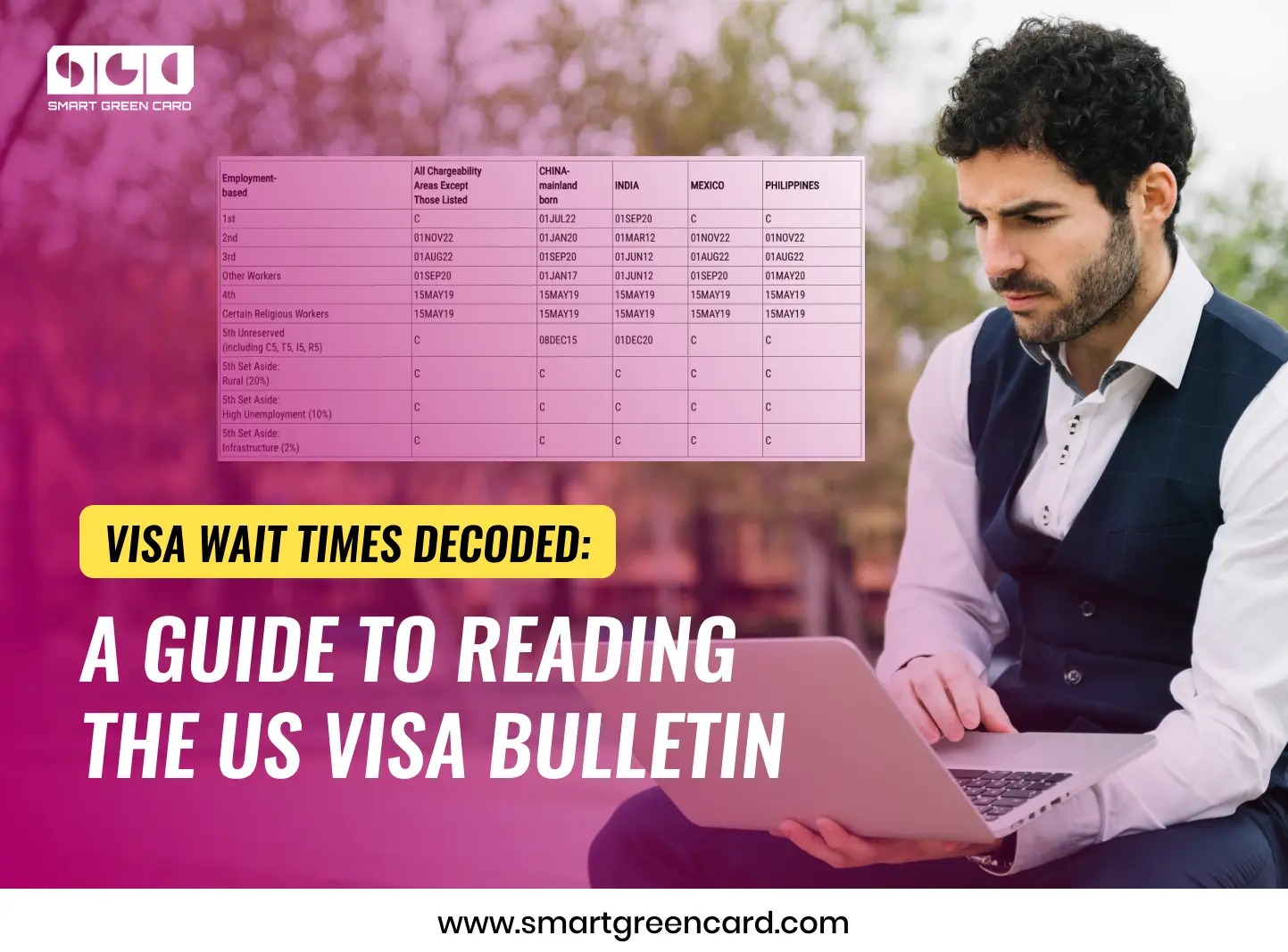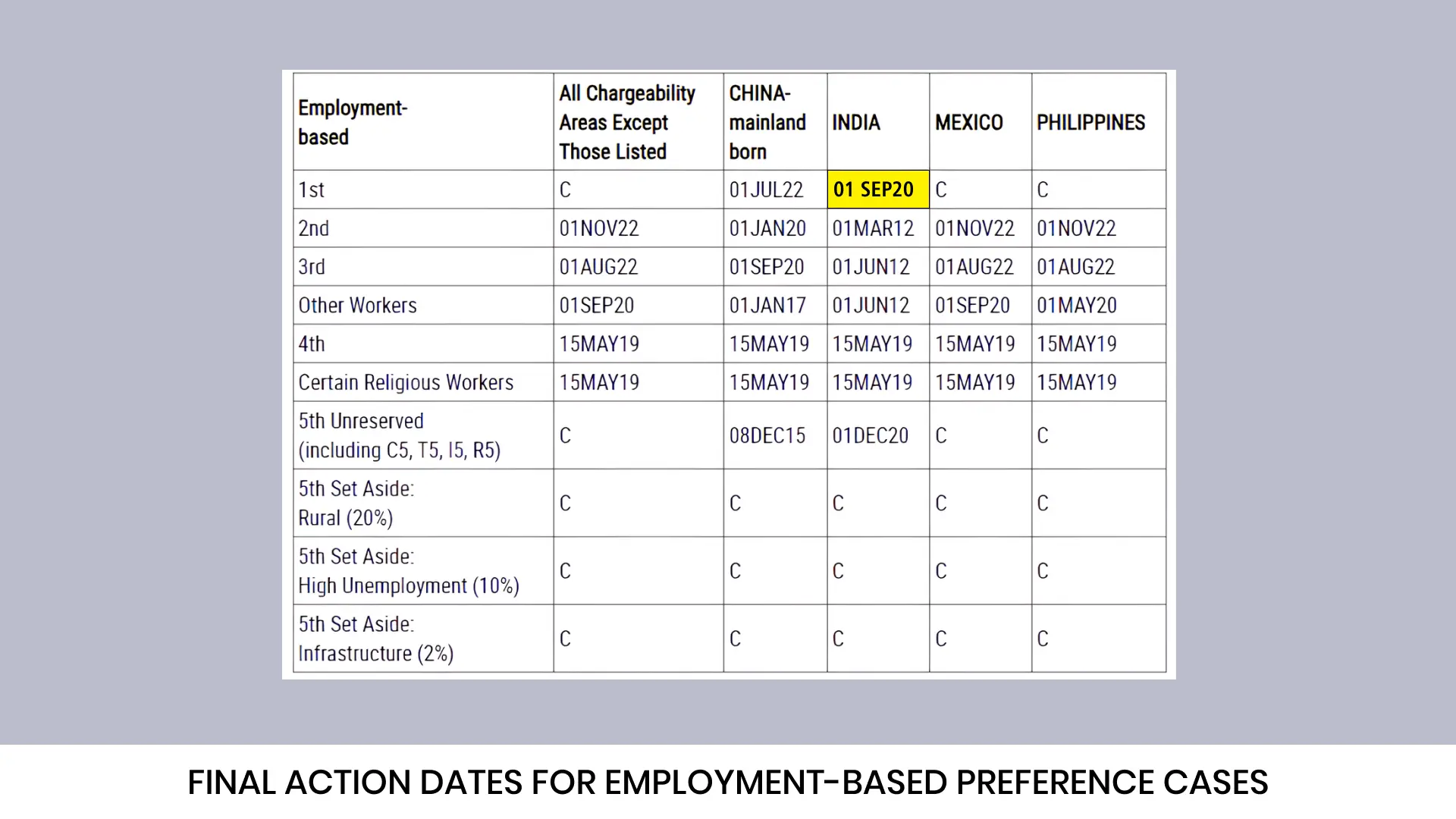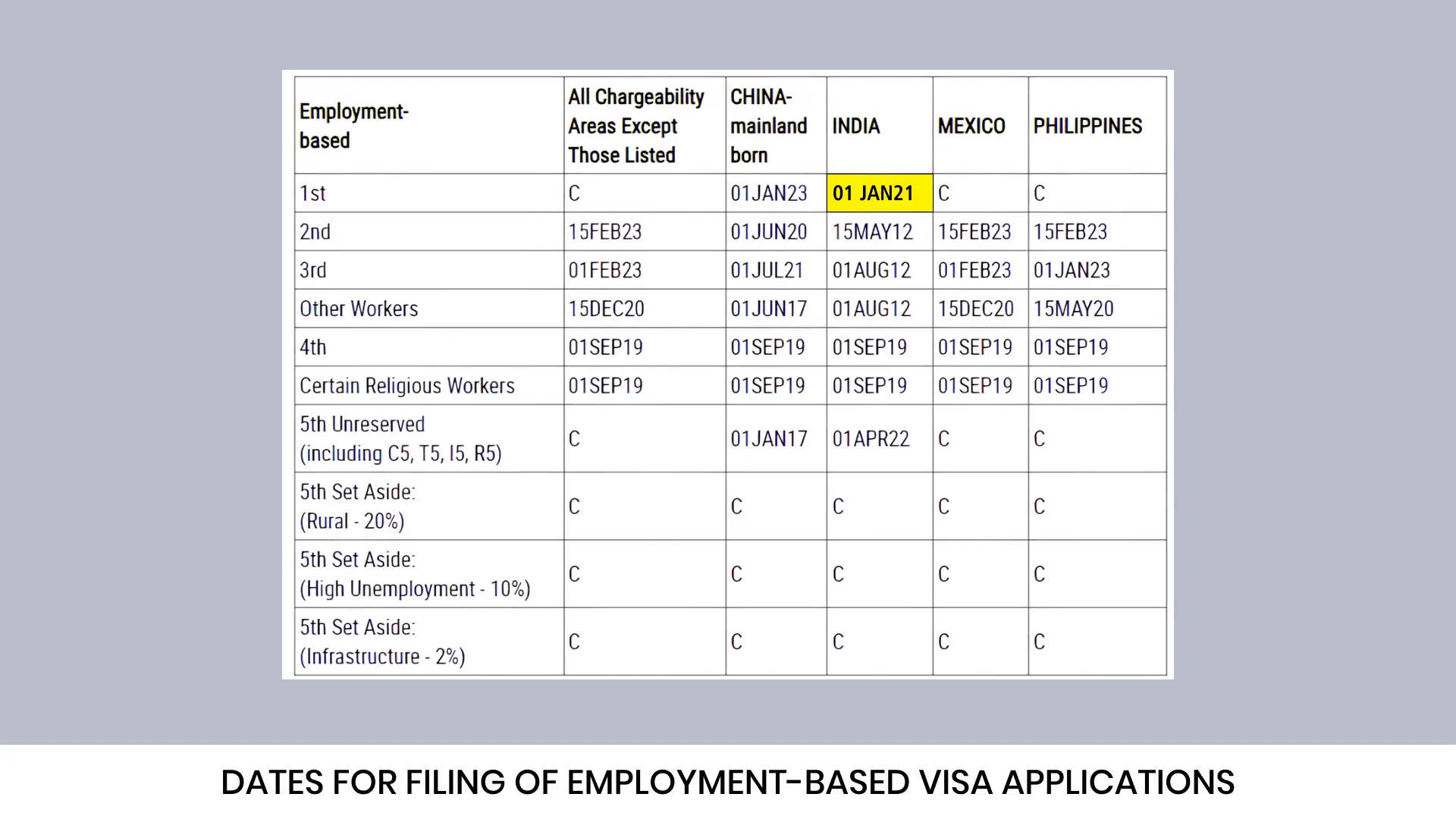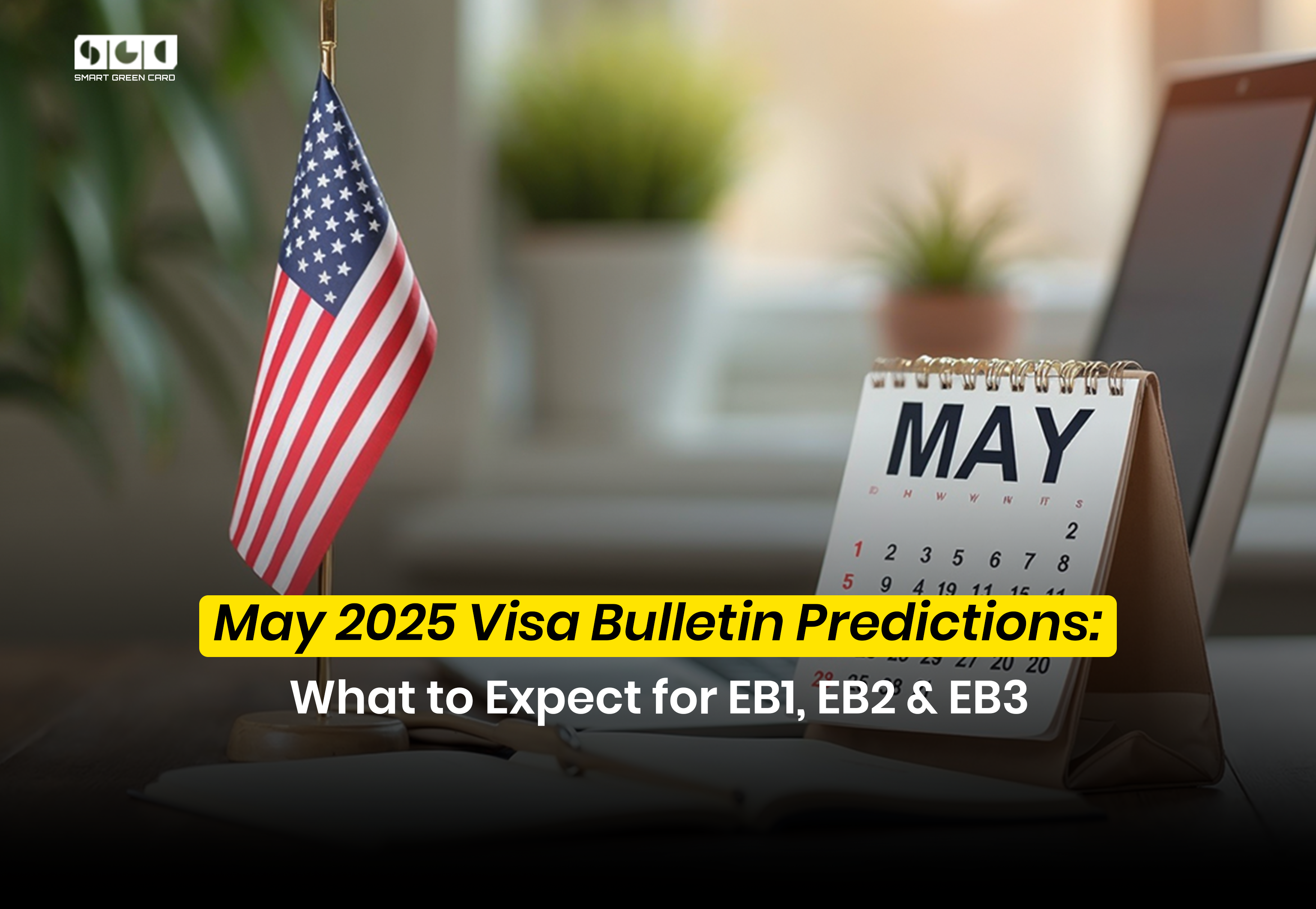Visa Wait Times Decoded: A Guide to Reading the US Visa Bulletin

The US Congress has set an annual numerical limit on the number of green cards issued. The two main categories of green cards are employment-based and family-based green cards. Within these categories, the US also limits the green cards based on the country of origin; each country has a 7% annual cap limit.
Every year, the number of green card applicants exceeds the annual limit, leading to green card backlogs. That’s where the visa bulletin comes into play; it informs when green card applicants can adjust their status in the US based on their priority date.
In this blog, let’s delve into the use cases of the US Visa Bulletin and how to read it to determine immigrant visa availability for you. Additionally, we will uncover which category has shorter green card wait times for Indians. Let’s begin.
Purpose of US Visa Bulletin

The Visa Bulletin is released by the Department of State every month. For green card applicants, the visa bulletin serves the following purposes:
- It helps I-140-approved applicants determine when to file their I-485 application based on their priority date.
- It aids in calculating the wait time to receive their green card.
- It provides insights into which I-485 applications are in the final processing stage.
What is your priority date?
If you are an Employment-based green card applicant requiring PERM processing, then the date you filed your PERM application with the Department of Labor is your priority date.
EB1A offers an advantage as it allows self-petitioning and no labor certification requires. Therefore, you can bypass the time-consuming PERM process.
So, if you are an EB1A green card applicant, then the date you file your I-140 application with USCIS is your priority date.
You can find your Employment-based green card priority date on Form I-797, also known as the Notice of Action, which is sent to you by USCIS to acknowledge that they received your I-140 application.
How to Read the Visa Bulletin to Determine Visa Availability for You?
The monthly US visa bulletin showcases the number of immigrant visas available. We are providing a step-by-step guide that will help you understand how to compare your EB1A priority date with the final action dates listed in the monthly visa bulletins to determine immigrant visa availability for you.
Let’s assume you are an Indian EB1A applicant, and you want to check the January 2024 visa bulletin to find out whether you can file an adjustment of status application with the USCIS.
Step 1:
First, you need to check the Adjustment of Status filing charts from the US visa bulletins section on the USCIS website to determine whether you can use both the Date for Filing chart and the Final Action Dates chart for that particular month.
For example, in the January visa bulletin, USCIS allows green card applicants to use both the Final Action Date chart and the Date for Filing chart.
Step 2:
Open the January green card bulletin on the US Department of State website. Scroll down to the final action date chart for the employment-based preference cases, as you are an employment-based green card category applicant.
EB1A is part of the EB1 green card category. To find out when you might be able to get your green card, look for the column ‘Employment-based first preference’ in the final action dates chart. Then, find your country of origin (like India) to see the date listed for your preference category.
In the example provided below, the final action date for you is September 1, 2020. Now compare this date with your priority date. If your priority date matches or is earlier than the final action date, then you are eligible to file your I-485 application with the USCIS.
If your priority date is not before the final action date, you can refer to the Date for Filing chart. However, please note that you can only utilize the Date for Filing chart when USCIS allows its usage for that particular month’s bulletin.

Step 3:
As mentioned earlier, in the January 2024 visa bulletin, you have the option to use the Date of Filing. Now, go to the Dates for Filing chart of Employment-based visa applications and locate the Employment-based first preference category for your country of origin to find the filing date for your preference category
In the example provided below, your filing date is January 1, 2021. If your priority date matches or is before the filing date, you can submit an I-485 application along with the Employment Authorization Document (EAD) and advance parole to the USCIS. However, you can only obtain your green card when the priority date becomes available in the final action dates chart.

The filing date chart helps you receive your Employment Authorization Document and travel authorization documents earlier.
Conclusion
If you observe the monthly US visa bulletins, you will notice that EB1A final action dates move faster than those of EB2 and EB3 green card categories. EB2 and EB3 green cards have been facing backlogs for several decades, resulting in significant green card wait times. Therefore, if you are seeking the quickest path to obtaining a US green card, EB1A is the optimal choice for you.
We hope this blog helps you understand the US visa bulletin and how to interpret it to determine green card availability for you.
If you are seeking hands-on guidance for EB1A that maximizes your chances of success, consider exploring the Smart Green Card VIP plan.
Check out Smart Green Card for resources, strategies, and success stories.
- SGC
- No Comments
Latest blog & Newsletters
May 2025 Visa Bulletin Predictions: What to Expect for EB1, EB2 & EB3
May 2025 Visa Bulletin Predictions: What to Expect for EB1, EB2 & EB3...
Smart Green Card: Expert Guidance for Your U.S. Visa & Green Card Journey
Smart Green Card: Expert Guidance for Your U.S. Visa & Green Card Journey...
H1B Lottery Results 2025: Everything You Need to Know
H1B Lottery Results 2025: Everything You Need to Know The H1B visa lottery...





